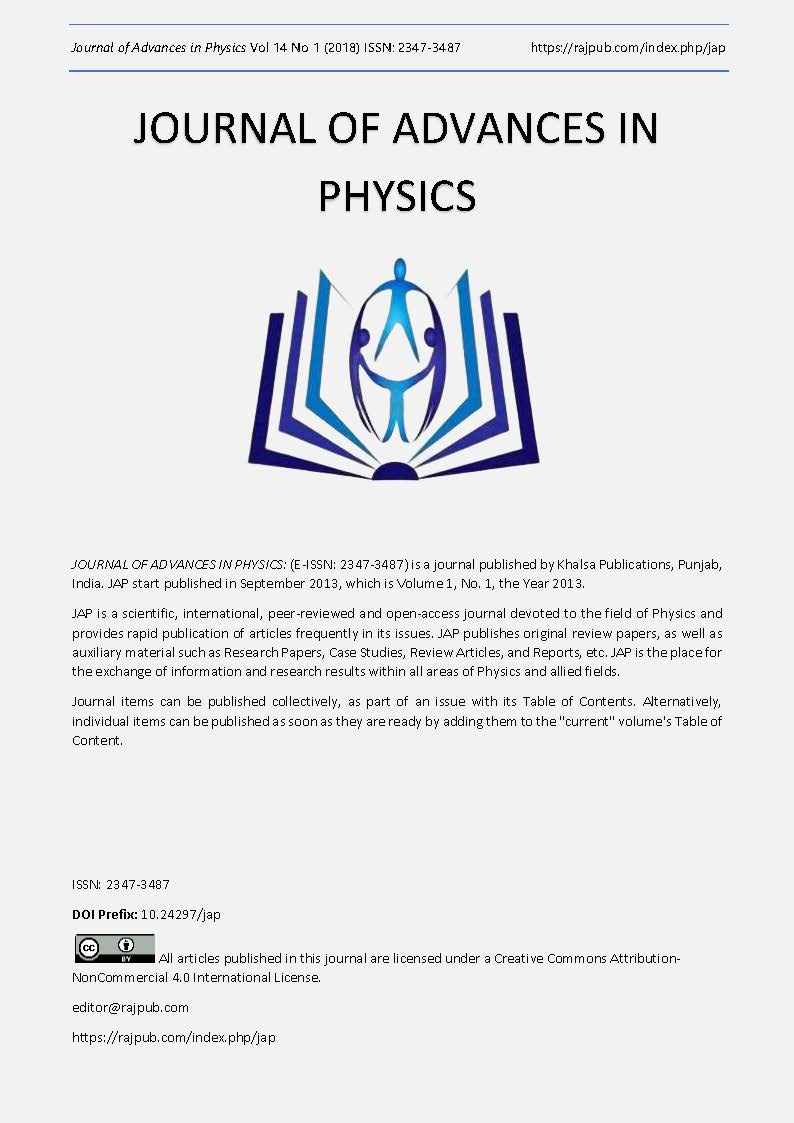A A Novel Layered System to Prevent High-Energy, Ionizing Radioactive Photon Transmissions and Control Particle Behavior With The Utilization of Monte Carlo Transport Modeling Via SPENVIS-Based Modular Implementation
DOI:
https://doi.org/10.24297/jap.v14i1.7306Keywords:
Radiation Shielding, Particle Behavior, Gamma Ray, Neutron, Monte Carlo, SPENVIS, GRAS, MULASSIS, SHIELDOSE, Nuclear Energy, Beta Ray, Alpha Ray, X-RayAbstract
Today, mass nuclear weapons and reactor plants are becoming more prominent. However, current methods of radiation shielding are not viable due to heavy cost and ineffective means of weakening photon momentum. Therefore, it becomes necessary to design structures resistant to the behavior of radiation from exposing to human life. Specifically, 280 computational experiments were conducted in a SPENVIS environment utilizing Multi-Layered Shielding Simulation (MULASSIS) and Geant4 Radiation Analysis for Space (GRAS) on multiple shielding models. These thirteen models tested against nuclear, artificially-generated incident particles under single and multi-ray analyses with four angular photon distributions in comparison to SHEILDOSE, a current standard for cosmic radiation shielding developed by the European Space Agency. These designs using stainless steel, lead, slightly-radioactive bismuth, and lithium-hydride prevented over 99% of particle detection compared to SHIELDOSE, which conversely increased the neutron-energy dose by over 700%, and insufficiently reduced high-energy gamma ray penetration. Per kilogram, my model is 144 times cheaper and only a small fraction of the thickness of either SHIELDOSE or metal foams. Thus, the potential of enhanced nuclear plants, further space exploration, and an overall safer approach to utilizing or preventing exposure to atomic particles such as with multi-disaster protection buildings can become more readily available, thus saving millions of lives that are in impending danger.
Downloads
References
Boyer, and Timothy H. “Interference Between Source-Free Radiation and Radiation from Sources: Particle-Like Behavior for Classical Radiation.” [1703.06309] Interference Between Source-Free Radiation and Radiation from Sources: Particle-Like Behavior for Classical Radiation, Cornell University Library, 18 Mar. 2017.
Childs, P. A, and C.C. C. Leung. “A One?Dimensional Solution of the Boltzmann Transport Equation Including Electron–Electron Interactions.” AIP.com, Journal of Applied Physics, 1996, aip.scitation.org/doi/abs/10.1063/1.360935?journalCode=jap.
Choi, Charles Q. “Space Radiation Too Deadly For Mars Mission.” Space.com, 31 Mar. 2008, www.space.com/5190-space-radiation-deadly-mars-mission.html.
Clark, Ashley. “Active Radiation Shielding.” Radiation Shielding Techniques for Human Spaceflight, Stanford University, 17 July 2015.
Desobry, G E, and A L Boyer. “Bremsstrahlung Review: an Analysis of the Schiff Spectrum.” PubMed.com, PubMed, 1991.
“Ionizing Dose Model Shieldose.” SPENVIS, European Space Agency.
“Ionizing Radiation.” Centers for Disease Control and Prevention, Centers for Disease Control and Prevention, 7 Dec. 2015, www.cdc.gov/nceh/radiation/ionizing_radiation.html.
Loffredo, Filomena, et al. “Validation of the Electromagnetic Physical Processes with Software SPENVIS.” American Journal of Environmental Protection, Science Publishing Group, 27 Oct. 2015.
Maine, Elicia, and Michael F Ashby. “Cost Estimation and the Viability of Metal Foams.” ResearchGate, Apr. 2000.
Ray, McGinnis. “Shielding Equations and Buildup Factors Explained.” MIT Software Development.
Seltzer, Stephen M. “Updated Calculations for Routine Space-Shielding Radiation Dose Estimates: SHIELDOSE.” NIST, 17 Feb. 2017.
“SPENVIS - Space Environment, Effects, and Education System.” SPENVIS - Space Environment, Effects, and Education System, European Space Agency.
Szondy, David. “Metal Foams Could Provide Lightweight Radiation Shielding.” New Atlas - New Technology & Science News, New Atlas, 23 July 2015,
Downloads
Published
How to Cite
Issue
Section
License
 All articles published in Journal of Advances in Linguistics are licensed under a Creative Commons Attribution 4.0 International License.
All articles published in Journal of Advances in Linguistics are licensed under a Creative Commons Attribution 4.0 International License.




